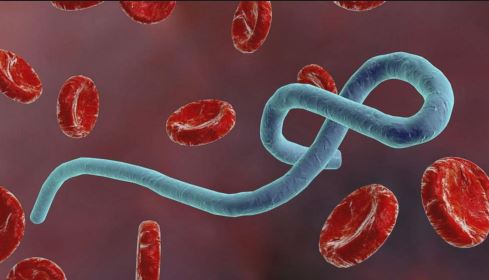Updated By: LatestGKGS Desk
Ebola Virus: Cause, Symptoms, Prevention, Treatment

Ebola Virus: Cause, Symptoms, Prevention, Treatment
Ebola Virus is a very rare and deadly disease that mostly infects humans and other animals (primates) including monkeys, gorillas, and chimpanzees.
Ebola Virus is caused by an infection with a group of viruses (Ebola, Sudan, Taï Forest, and Bundibugyo viruses) within the genus Ebolavirus.
Ebola Virus was first discovered near the Ebola River in DR Congo in 1976.
Cause & Symptoms
Ebola Virus spreads through direct contact with body fluids and blood of the infected person. Ebola virus also spreads through contact with items contaminated by body fluids. The virus infects a new host through broken skin or mucous membranes in the eyes, nose or mouth.
Scientists, based on the nature of similar viruses, believe that the virus is animal-borne, with bats being the most likely source. The bats carrying the virus can transmit it to humans and monkeys.
Ebola Virus infection main symptoms include abrupt fever, fatigue, sore throat, weakness, eye redness, joint and muscle pain, headache, nausea, and vomiting.
Ebola Virus additional symptoms of the deadly virus include diarrhea, hiccups, cough, rash, stomach pain, chest pain, loss of appetite and breathing problems.
Ebola Virus severe symptoms include the decreased function of liver and kidney and internal and external bleeding.
Prevention & Treatment
Ebola Virus blood tests for viral RNA, viral antibodies or for the Ebola virus itself help confirm the diagnosis. There is also no proper treatment and cure for the Ebola virus. Those infected are isolated and provided with supportive therapy and experimental treatment. The virus has a high mortality rate. The symptoms of the virus start showing anytime between 2-21 days after contracting the virus.
